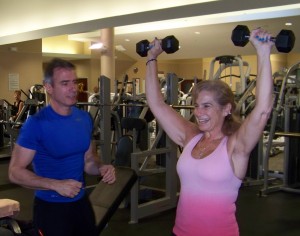by Michelle Sutton-Kerchner
The statistics are staggering. About 25.8 million people in the United States have diabetes. Seven million of those are undiagnosed. Determine if you’re at risk and take preventative measures …
Diabetes presents in four major forms: type 1, type 2, prediabetes, and gestational diabetes. Any form results in too much glucose in the bloodstream, although for different reasons. The former two are chronic; the latter are potentially reversible conditions.
Type 2 diabetes is the culprit for such a highly undiagnosed population. Symptoms are mild and often mistakenly attributed to another cause. Know your risks and recognize the signs for the power to prevent.
Got a Clue?
Although not a firm diagnosis, these symptoms are often indicators of diabetes. Awareness allows timely treatment to avoid serious, sometimes life-threatening, illness. It also may provide an opportunity to reverse the condition.
Increased bathroom trips: Urinating with increased frequency, perhaps even several times during sleeping hours, can be an indicator. The kidneys attempt to eliminate excess glucose in the blood caused by type 2 diabetes. In an effort to flush glucose out of the blood and into the urine, urine production increases. Frequency and amount of voiding increases.
Often confused with: This should not be mistaken for the urgency associated with bladder or urinary tract infections where frequency is great but output is minimal.
Increased thirst: The overproduction of urine tends to dehydrate the body. This increases thirst, along with the dry mouth common in this situation. Take note of how much you drink throughout the day. Determine if you suffer from frequent strong thirst.
Often confused with: Too much sodium intake from a canned soup lunch, or an overzealous workout that leaves you panting like a canine on an August day.
Overeating: High insulin levels in the body make the brain feel hungry, which triggers excessive eating. Perhaps your fridge raids aren’t an innocent case of nighttime TV munchies. They may be your body’s attempt to satisfy an increased appetite.
Despite the increased appetite, type 2 diabetes can actually cause weight loss. When cells are deprived of glucose (because it’s predominately in the blood), weight loss occurs. Calories are also expelled, along with water weight, through increased urination. Although weight gain can increase the risk of type 2 diabetes, the disease itself may cause a drop in pounds.
Often confused with: For many, weight loss is a gift that shouldn’t be questioned. People tend to blame the increased appetite on everything from stress to hormonal shifts to change of season.
Lingering Pain in Extremities, Recurring Infections, Slow Healing: High blood sugar levels provide the perfect environment for nerve damage, yeast infections, and improper healing.
Foot pain and numbness is a common complaint of those who suffered diabetes for 25 or more years. However, this symptom can sometimes occur in the prediabetic phase. Fifty percent of unexplained neuropathy, nerve damage, in the body’s extremities is determined to be caused by diabetes. Most often, the damage presents in the feet as numbing, tingling, and pain. It then works its way upwards to affect nerves throughout the body.
Foot infections are also common in people with diabetes (usually advanced stages). In addition to diabetic neuropathy, diabetes damages the skin and blood vessels of the feet.
For women with type 2 diabetes, yeast infections are prevalent. Although the occasional infection is not cause for alarm, repeated ones over several months can signal trouble. Yeast and bacteria multiply when blood sugar is elevated, thus triggering the repeated infections. This also makes one susceptible to bladder infections.
Cuts and bruises tend to linger in those with type 2 diabetes. The high sugar levels slow and hinder the healing process. If you have a bruise that’s been around too long or a skin injury that won’t repair, investigate. These are classic signs of type 2. The injuries may never fully heal, leaving a brown scar in their place.
Often confused with: Bumps, bruises, aches, irritations. They’re an inevitable part of life. Usually, we don’t take notice of them until they become a frequent issue. When these incidents occur, consider if they are combined with other signs of diabetes. You may discover a pattern of symptoms rather than mere isolated incidences.
Blurry vision: This is an early warning sign of type 2 diabetes, again caused by all that sugar. The lens of the eye is unable to bend properly and eye muscles must struggle to focus. Blurred vision occurs when eye muscles try to adapt to the rapid changes caused by shifting blood sugar levels. Eventually, the body adjusts to blood sugar levels and clear vision should return.
Often confused with: An overdue need for that eye exam you’ve been postponing.
It’s easy to see how diabetes goes undiagnosed. Busy days provide excuses for any symptoms we bother to notice. Be empowered by recognizing the signs and acknowledging them for what they might signal.
Take a Proactive Approach


Regardless of symptom presentation or risk factors, life should be a constant flow of healthy initiatives. Prevention is the best medicine. According to a study from the Diabetes Prevention Program, healthy lifestyle improvements (through diet and exercise) reduced the risk of contracting type 2 diabetes by 58 percent.
Strength training and cardio workouts improve the body’s use of insulin and lower blood sugar levels for up to 48 hours. Exercise also improves circulation, including in the extremities. This encourages healing, especially in diabetics who are known to suffer from peripheral neuropathy.
Family history is predetermined and aspects of your body size can be genetic. However, you can work to make your middle less “apple shaped.” Where you carry excess weight can determine your risk for type 2 diabetes. Those with surplus abdominal fat have increased insulin resistance and, therefore, increased risk for diabetes. The danger of heart disease is also higher in those with a wide waist.
A personal trainer can create a fitness program that focuses on prevention. Weight training is ideal for increasing lean muscle mass. A healthy body weight makes one less susceptible to diabetes and many other diseases. Additionally, a greater muscle-to-fat ratio increases the ability to burn fat even while at rest.
A recent study of Hispanic men and women showed 16 weeks of strength training produced dramatic improvements in sugar control that were comparable to taking diabetes medication. Additionally, the study volunteers were stronger, gained muscle, lost body fat, had less depression, and felt much more self-confident. Quite the extra perks! Aerobic exercise is also proven to decrease the risk of type 2 diabetes. For those with diabetes, it helps better manage blood sugar levels.
Scared into Action: Leslee’s Story
Member Leslee Atiram discovered a fitness routine that met her needs as she fought to reverse type 2 diabetes. “My personal trainer at the Center created an exercise program appropriate for my abilities. The workout fit like a glove,” informs Leslee who knows anything less would’ve discouraged her. As she progressed, the routine became easier. Her personal trainer knew how and when to adjust the program for maximum benefit within safe parameters.

Leslee, who feels her health history should be in the Guinness World Records, lists the series of traumas her body experienced. They include two heart attacks; a burst appendix; a pancreatic tumor leading to the removal of her spleen, gallbladder, and 40 percent of her pancreas; lymphoma with subsequent chemotherapy; and diabetes. “Out of all this, diabetes seemed to scare me the most.”
The diabetes began as numbness in Leslee’s feet, with general lethargy. Her sons didn’t recognize their “Woodstock alum” Mom as she declined parties, shows, and late nights. There was an urgent need for Leslee to address her diabetes before more than just her quality-of-nightlife suffered. Her physicians recommended healthy diet and exercise, which motivated her to join the Center.

Leslee reports the Center now feels like home. “It’s easy to get to the Center four or five times a week. I see people who have become a crucial part of my life and hugely motivating,” she says. “My health and appearance have improved. I went from a size 18+ to a size 4. My best weight prior was a size 10 in high school. In one year, I lost 95 pounds.” Despite these impressive gains, Leslee considers no longer being diabetic as her best accomplishment.
“I would love to say people are friendlier and treat me better because of my new appearance. However, I know it’s coming from within me. I treat myself better and my happiness is reflected in the way people respond to me,” Leslee shares. “My success at a healthier lifestyle has brought me more joy than I ever could imagine.”
Sources
“Type 2 Diabetes and Exercise,” at www.webmd.com.
www.diabetes.org
www.diabetes-exercise.org
Image Credits
Sugar Cubes: (c) Alex Fairest at www.dreamstime.com.
 Fitness & Wellness News Your Source for Fitness News, Wellness News, Health News, and Nutrition News!
Fitness & Wellness News Your Source for Fitness News, Wellness News, Health News, and Nutrition News!



